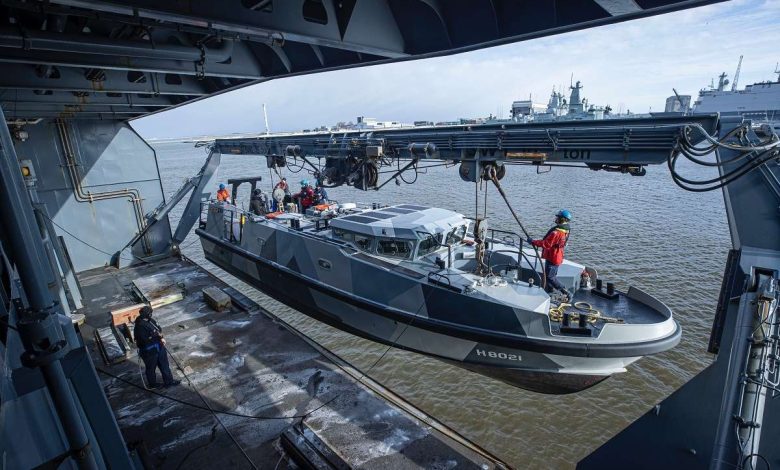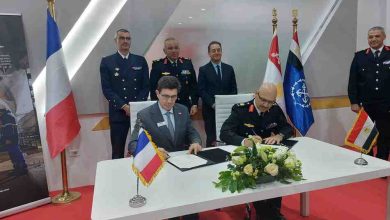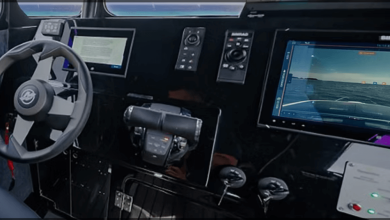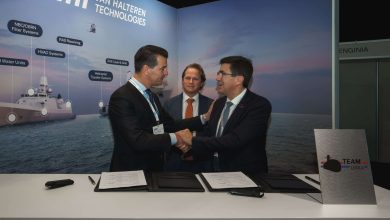
“Unveiling the Hydrograaf: Damen Shipyards Den Helder Launches Innovative Survey Vessel”
On Friday, February 26, 2021, the official naming and transfer of the Expeditionary Survey Boat (ESB) Hydrograaf, belonging to the Royal Netherlands Navy, occurred at Damen Shipyards Den Helder (DSDH).
In light of the current COVID-19 restrictions, the naming event and transfer were conducted in a modified format, with most guests attending via livestream. The naming was performed remotely, as outgoing State Secretary of Defence Barbara Visser smashed a champagne bottle against the vessel in Den Helder using a button. The ceremony saw the physical presence, while maintaining social distance, of deputy commander of the naval forces Rear Admiral Nacht Hulsker, captain of the ESB Lieutenant at Sea 2 (OC) van Amerongen, DMO Director of Projects Commander Kreiter, DSDH Deputy Director Peter van den Berg, and the responsible project lead from DSDH.
The design and fabrication of the Hydrograaf was executed in close cooperation between DMO and DSDH. Peter van den Berg from DSDH stated, “Our project manager, along with the Ministry of Defence team, delivered a sophisticated performance in the design and assembly of this new class of vessel.”
Upon completion, the Hydrograaf received a maximum load capacity of 24 tons, aligned with the maximum allowed load of the davit hoisting system found on ships such as HNLMS Johan de Witt. Furthermore, the vessel is designed to achieve a speed of at least 20 knots while adhering to stringent noise regulations and limited capacity for hydrographic equipment.
Following the naming ceremony, DSDH ceremoniously transferred the ESB to the Director of Projects at Defensie Materieel Organisatie (DMO), Commander Kreiter, who led a toast to the vessel and her crew.
In the forthcoming weeks, the ESB will undergo preparation for delivery to the Royal Netherlands Navy (RNLN), which will commence operations after an intensive work-up period of several weeks.
The ESB will deliver current insights about seabed conditions and the underwater situation in areas where such intelligence is necessary. With this data, the Royal Netherlands Navy (RNLN) bolsters expeditionary maritime missions and ensures a navigationally safe environment for vessels. Key responsibilities of the ESB include:
- Collecting environmental data to inform decisions about the feasibility of amphibious operations;
- Executing hydrographic surveying in support of emergency aid missions;
- Assisting with civil hydrographic responsibilities on the national continental shelf (NCP).
Measuring sixteen meters in length, the ESB can be deployed from large decks, such as Zr. Ms. Johan de Witt. The ESB is capable of independently conducting hydrographic surveys under tactical scenarios, positioned farther from the mothership. It operates as a capable platform comparable to a hydrographic survey vessel (HOV) while meeting the highest standards for surveying.
The designation Hydrograaf has been selected in tribute to the National Inspection Vessel Hydrograaf from 1910, serving as a clear nod to its primary role.







